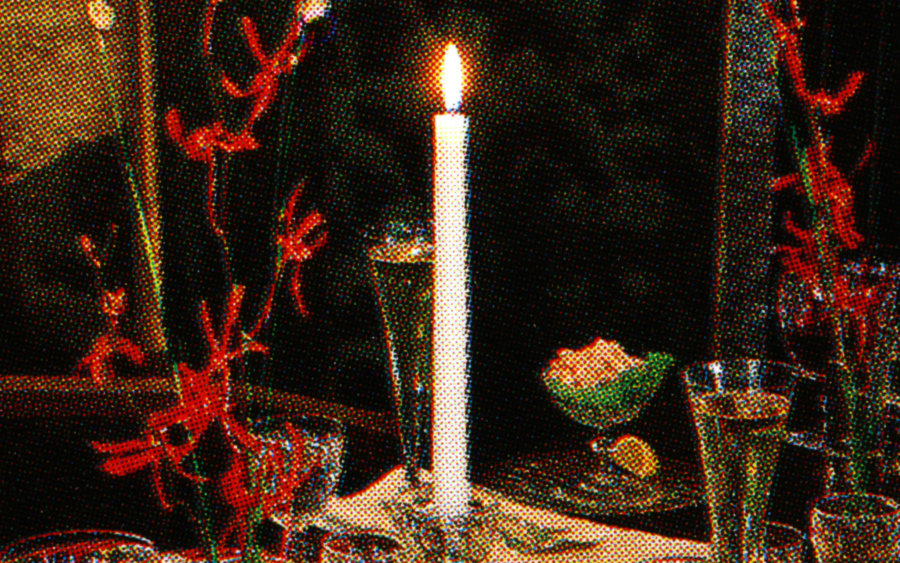2017
Michael Darling, “Miracle Gro,” Were Good Men, Brussels and New York: Triangle Books and CLEARING, 2017, pp.1-3
Calvin Marcus operates like a spirited and self-sufficient alchemist. His studio brims with new projects, unconcerned with how one might be logically connected to the next, following his curiosity and instincts above all else. This may be maddening to his dealers, collectors and fans who are trying to understand his practice more thoroughly, or to know what is most important or most indicative of his true spirit at this early point in his career, but his catholic methods are already yielding an ever-expanding body of work that is thrilling in its variety and inventiveness. the more one sees, the more one can appreciate the uncynical and joyful verve that fuels his output, connecting hand-made and hand- printed shirts hanging in dry-cleaning bags, ton black and white dream-like paintings, to dollhouse-scale shacks on stilts and diminutive clay sculptures of fish or purses. If this sounds random, it is, at least to an outside observer, but if these are authentic strains pouring unfiltered from his mind, why worry when we are afforded a rare glimpse into fascinating inner dialogue?
The interconnected groups of new work highlighted in this volume illustrate key aspects of his process, which careens from raw, immediate, and child-like to methodical, cunning, and highly intentional. As with some previous bodies of work, Marcus began with crayon drawings on paper, where the scumbled and imprecise qualities of the crayon immediately recall the innocent doodlings of youth as does the particular paper he favors, which looks as if it has been sitting in the schools art supply drawers for too long, painted a golden-yellow-brown. The style and subject matter of these drawings likewise transport viewers back to a pre-professional period in life, featuring as they do cartoonish headshots of military men whose seriousness is compromised by promiscuously curling tongues. It’s as if a military buff fell too far under the influence of Mick Jagger or Gene Simmons. These men wear uniforms of various but not easily identifiable regiments, and are shown in their prime, however deranged and mischievous or splayed dead in the grass, post-battle. Interspersed among these figurative works are palate cleansing passages of thatched grass, seemingly repetitive, but each unique like a fingerprint, lending a sense of calm and reflection to the group. These drawings feel as they have been dashed off fairly quickly, which is not to say without care and craft, subtle in their faint yet exotic coloration, reminiscent of the hand-tinted prints of James Ensor.
As crayons have an outside limit to the scale at which they can be deployed, these drawings can rightfully only exist at the size of notebook pages. But Marcus the thaumaturge wanted to see how they would translate to large canvases and sought out a way to make that happen. It entailed working with a master artisanal paint maker who matched the color and viscosity of the crayons to large oil sticks and also devising a way of preparing and underpainting the canvases to mimic the antiquated tones of the original paper. From there he went about rendering replicas of the rogue’s gallery of fallen warriors, transferring their grisly visages onto large surfaces where their garishness could be on full display. The artist ran wild with the rotting corpses, holding true to his fascination with the details of their international uniforms, but depicting flesh in tones of blue, black and green or lascivious tongues in blue, fuchsia, and brown. The bodies themselves seem deflated and flat, as if critters have already disgorged their inner structure, allowing them to be graphic containers for Marcus’s experimentation with color, borrowing lovingly from German Expressionists like Ernst Ludwig Kirchner, Emil Nolde or George Grosz while also hinting at the veracity of Matthew Brady’s famous Civil War reportage. Each soldier fills the frame of the canvas, but one can tell they have fallen in a field as blades of green grass fill the empty spaces between their twisted limbs.
Marcus runs with this verdant detail in a way that few would, deciding to make entire paintings at the same scale solely comprised of calligraphic green marks. Interspersed with the portraits of soldiers, they evoke a sprawling field of death. When viewed as a coherent whole, these two types of paintings become an ambitious, environmental cycle not seen since Twombly, and the sparest of the grass paintings harken poignantly to that predecessor’s work. Viewed singly, however, the grass paintings are some of the most elegant and beautiful works I have ever seen, conjuring references to artists like Milton Avery and Alex Katz, but also to Japanese screen paintings in their soothing composure. Depending on the density of the verdure, one could be observing a sandy dune or an overgrown field, and many of them draw out bodily associations as well, looking like hair (albeit of an alien kind) sprouting in vulnerable or intimate locations.
If it has been difficult to read the driving animus of Marcus’s still young practice up until now, the interconnectedness and impact of this group of paintings and drawings makes a clear case for the artist’s ambitions. Across different scales and media he successfully melds process and affect, translating highly personal or even private imagery even to viewers uninitiated in his thinking. He has somehow found a language that is universally recognizable and accessible, yet still redolent with mysterious meaning and intention, drawing us in to learn more but never divulging all the secrets. This is the true test of art, as well as the goal of the conjurer, and already at this early stage in his development, Calvin Marcus is showing himself to be a budding master of both.


